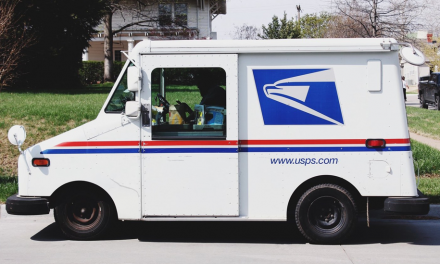
USPS concerns with bid to cut government’s $1bn mailing spend
The US Postal Service will be helping one of its largest customers – the federal government – to reduce its use of the mail, but said today it is concerned about the loss of revenue associated. Altogether, federal government agencies spend more than $1bn a year mailing out communications, but last month the General Services Administration issued instructions for government bodies to make an effort to cut down on their mailing costs.
The GSA, the federal procurement agency, wrote to the heads of federal agencies to encourage various practices to reduce mailing costs.
Suggestions included consolidating mail with other agencies to benefit from bulk mail discounts, presorting mail to access work share discounts, and use flat-rate USPS boxes and envelopes where possible. The GSA also recommended training with USPS address management tools to reduce the frequency of mail being returned as undelivered.
And, the agency urged a general switch to electronic mail.
Commenting on the new GSA policy bulletin, USPS spokesman Dave Partenheimer told Post&Parcel today that the Postal Service was working with government agencies to help reduce their overall mailing costs.
But, he said it was also working “aggressively” to retain and grow the federal business.
“While mail may be declining, we are growing the package business and showing how the value of direct mail can enhance their other communications efforts,” said Partenheimer.
“Flawed concepts”
The USPS spokesman was critical of the GSA recommendations, particularly when it came to aspects like use of electronic mail as an alternative to physical mail.
Saying USPS “does not concur with all suggestions of the GSA” in the new policy bulletin, he stated: “Several of the suggestions in the bulletin are based upon flawed concepts and information.”
Among the misconceptions he said the GSA policy promoted were the ideas that using email and faxes instead of mail would improve the sustainability – pointing to the electricity consumption involved – and that switching to electronic communications could risk exposure to cyber-security threats and data security breaches.
The USPS spokesman also said GSA recommendations that staff should scan hardcopy items to deliver electronically could prove a false economy taking account of additional staff time to scan items.
“Most importantly, each agency must assess the value proposition offered by each communication strategy and determine its strengths and weaknesses before making a reasoned decision concerning the best method of communications,” Partenheimer said.
“While a ‘paperless office’ is a wonderful vision, it is not typically a reality. Hardcopy scanned and sent electronically may, in many cases, simply turn into another printed copy by the recipient.”
Moving forward
Last month GSA officials visited the US Postal Regulatory Commission to discuss work with government agencies to reduce the costs of using the mail.
During a public meeting of the Commission, the officials said new developments within government organisations included use of sorting software within the Internal Revenue Service that cuts the need for mechanical sorting by 80%, and a pilot project by the Department of Defense in which hardcopy mail is converted to a digital delivery format so that officials can sent items electronically.
GSA mail management policy program manager Derek Miliner said agencies were now required to presort mail and consolidate mail under the new policy, and said agencies were now coming together to consolidate mail.
“I did a small survey, asking 28 large agencies that spend over $1m on mail – there’s already nine of them consolidating,” he said. “We are moving forward with the consolidation, the Postal Service is helping.”
Commission chairman Ruth Goldway said she believed the new GSA policy could prove a “win-win situation” for the Postal Service and in reducing government spending, particularly by increasing the amount of mail undergoing presorting.
While most federal government agencies do already carry out some presorting of their mail, a Commission white paper published last year suggested that more widespread presorting could save $100m a year on mail costs.
“The Postal Service actually makes more money per piece on First Class Mail that’s processed and presented workshared than it does single piece,” Goldway said. “And the taxpayers and the rest of the government would be paying less.”
The USPS spokesman said workshare discounts do help achieve overall operational savings, but he said of the GSA recommendation to presort mail: “The new directive to presort will have a slight impact on our revenue as currently over 90% of federal agencies presort. However, we are concerned that any reduction in hardcopy mailing will affect our bottom-line.”












